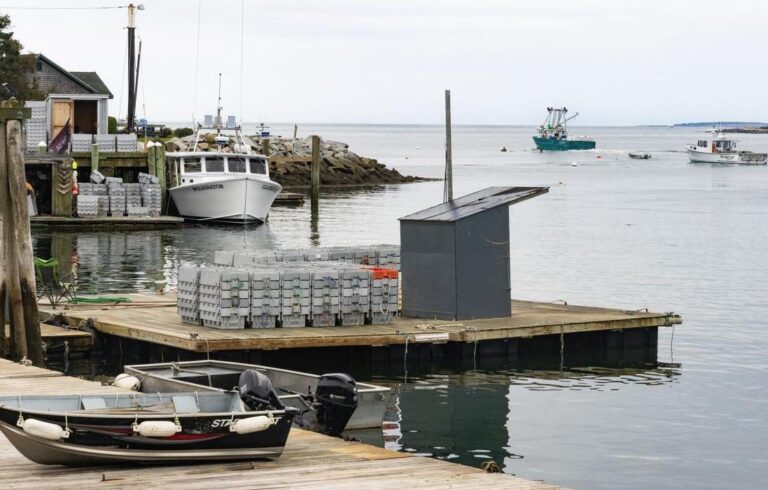In kitchens across the country, and certainly here on Islesboro, little containers of flour, water, and yeasts bubble away, giving rise to loaves of homemade bread and lots of conversations between experienced sourdough users and newcomers to the craft. A yeast shortage caused this.
The world, of course, has lots of yeast, no shortage in nature which makes tons of wild yeast, in all kinds of fruits and grains. We, however, like to bake with the captured kind, grown deliberately then sold trapped in, and raring to get out of, little packets, or jars, now nearly as rare as toilet paper.
But the coronavirus caught yeast manufacturers flatfooted.
Online news magazine Slate reported that one reason for a yeast shortage is, according to John Heilman, a Fleischman’s spokesman, “From a molasses (fed to yeast) standpoint and growing the yeast itself, there’s plenty of capacity. Where we wound up maxed out is our ability to package.”
The facility in India where the company gets its jars was closed in response to the virus, Heilman said, and material for paper packets has also run low. Thanks to just-in-time economic models, and the surprise that so many people decided to bake bread because they couldn’t buy it, an efficient but fragile supply chain broke.
A Memphis newspaper quoted Heilman saying, “It’s not like in some, places (where) you can turn the equipment up and kind of stress it. We really can’t rush the yeast. Otherwise, the yeast is not going to be a good product —the yeast are going to be very stressed.”
Well, not as stressed as someone with a houseful of sandwich eaters and no bread.
This is a modern problem, not shared, as you may recall, by Barb Fernald on Little Cranberry Island, who has fed her Wild Miss Islesford for years. She said:
“All I did was to mix equal amounts of tepid water and flour (I’m guessing it was about 1/4 cup of each) covered with plastic wrap and poked holes in it, and left it on the counter. Then I stirred it every 12 hours, and fed it with equal amounts of flour and water every 24 hours. Within about 5 days it was getting bubbly. I have noticed more people baking with sourdough. Who knew yeast would be hard to come by!”
She gave some to me and Courtney Naliboff on North Haven. Courtney has been so busy teaching online that she hasn’t “hopped on the sourdough bandwagon.”
Long before manufactured yeast, housewives kept yeast going in their homes for everyday baking. Part and parcel of beer brewing, at least pre-Temperance, the two processes supported one another since they both needed yeast. The beer-making generated more each time it was made.
During the 1800s Temperance movement, worry that one’s yeast might have had—gasp—alcoholic origins, gave rise to potato yeast recipes calling for grated potatoes cooked in boiling hot tea water, I suspect, to give it the right flavor, to which one added yeast from your previous batch; we cannot look too closely at the origins of that yeast, lest we find ourselves in a which-came-first-chicken-or-egg discussion. Some communities had at least one woman famous for her yeast making prowess from whom one could buy a pitcher-full to take home for bread baking.
Historic cookbooks recount dozens of ways to make and perpetuate yeast, sometimes called soured dough, not to be confused with sourdough, the tangy wild yeast caught and made famous by Western camp cooks. And Barb Fernald.
My friend Derreth Roberts gave me my current batch; I fed and coddled it, then raised a couple of creditable loaves made merely with flour, water, soured dough, and salt.
To make a standard favorite oatmeal bread recipe from All Maine Cooking, I amped up a cupful of soured dough a little bit with a teaspoon of dry yeast. Varoooom. Three toothsome loaves of sandwich bread later, I was off the bake nearly everyday system.
Trouble is sourdough bread is so tasty it disappears quickly. My scientist neighbor, Barbara Talamo, has been tinkering carefully with her sourdough and various kinds of flour, and made an excellent multigrain loaf. Soured dough takes a bit of getting used to it: it is sort of like training a feral cat to do tricks.
On Islesboro, Rachael, at the Island Market, generated a huge jar of an Alaskan sourdough she’s been cultivating. She spooned some into containers that island cooks could buy. Brilliant.
Are we going to remember the fun we had with sourdough when we can roar back to supermarkets? I hope not. Long live our yeast friends.
Sandy Oliver is a food historian who lives, gardens, and cooks on Islesboro.





